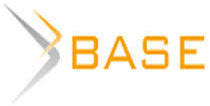Hierarchy of value orientations and locus of control for students with disabilities
Introduction. Inclusive higher education is based on the principle of humanity and addresses the personal values of students. The purpose of the research is to examine the hierarchy of values and locus of control for students with disabilities. Materials and methods. Sample: 93 students aged 17 to 28. Methods: Rokeach Value Survey and the Level of Subjective Control questionnaire. Statistical processing methods: Mann-Whitney U test, mean values ranking procedure, binomial distribution procedure. Results. Students with disabilities attach high importance to both interpersonal relationships and independence. Students with disabilities more often have an external locus of control, particularly in the spheres of health, failure, family and, above all, industrial relations, but there is a small group of respondents with an internal locus of control. Respondents attributed their achievements and interpersonal relationships to both themselves and external factors. Respondents with an internal locus of control place higher values on a financial security and entertainment, while respondents with an external locus of control place higher values of mature love and a happy family life. Conclusions. Students with disabilities have different values and types of locus of control. Comparative analysis revealed differences between students with congenital and acquired disabilities, as well as students with internal and external locus of control. The research expands the perception of students with disabilities. This will allow you to get closer to solving the urgent problems of their adaptation and interaction with teachers and students. The research is of interest to psychologists and educators.

















Пока никто не оставил комментариев к этой публикации.
Вы можете быть первым.
Bratchenko, S.L. (2011), Gumanitarnaya ekspertiza obrazovaniya [Humanitarian expertise of education], Obrazovatel`ny`j centr “Uchastie”, St. Petersburg, Russia.
Duda, I.V., Popovanova, N.A. and Chizhakova, G.I. (2019), Aksiologicheskaya napravlennost modernizatsii rossiyskoy obrazovatelnoy sistemy [Axiological orientation of modernization of the Russian educational system], Krasnoyarsky gosudarstvenny pedagogichesky universitet im. V.P. Astafieva, Krasnoyarsk, Russia.
Fominykh, E.S. (2014), “Life values as psychological indicators of victimhood of students with disabilities”, Aktualnye problemy gumanitarnykh i estestvennykh nauk, 2(2), 268-270. (In Russian).
Konovalova, M.D. and Shchetinina, E.B. (2013), Psikhologo-pedagogicheskoe soprovozhdenie studentov s ogranichennymi vozmozhnostyami zdorovya [Psychological and pedagogical support of students with disabilities], Saratov University Publishing House, Saratov, Russia.
Kupriyanchuk, E.V. (2019), “Zhiznennye smysly i tsennostnye orientatsii u studentov s ogranichennymi vozmozhnostyami zdorovya“ [Life meanings and value orientations in students with disabilities], Pedagogicheskoe vzaimodeistvie: vozmozhnosti i perspektivy, Materialy I nauchno-prakticheskoi konferentsii s mezhdunarodnym uchastiem, 799-803. (In Russian).
Kurlenkova, A.S. (2018), “Invalidnost kak effekt praktik: popytka novoy kontseptualizatsii” [Disability as an effect of practices: an attempt at a new conceptualization], in: A.S. Kurlenkova, E.E. Nosenko-Shtejn (ed.), MBA Publishing House LLC, Moscow, Russia.
PsyLab.info (2009-2024), “Uroven subiektivnogo kontrolya“ [Level of subjective control], available at: https://psylab.info (Accessed 20 June 2024).
Ryumshina, L.I. (1998), “Humanistic psychology in Russia: past and present”, Prikladnaya psihologiya, 5, 1-10. (In Russian).
Ryumshina, L. (2000), “Empirical study of pedagogical activity styles”, Voprosy Psikhologii, 1, 148-149. (In Russian).
Sorokoumova, S.N. and Larikova, E.N. (2022), “Semantic-life orientations in the personality structure of future defectologists”, Vestnik Mininskogo universiteta, 10, 1(38). https://doi.org/10.26795/2307-1281-2022-10-9. (In Russian).
Tokarskaya, L.V. and Ivanova, A.A. (2023), “The study of the resilience of higher education students with sensory impairments”, Uchenye zapiski Krymskogo federalnogo universiteta V.I. Vernadskogo. Sotsiologiya. Pedagogika. Psikhologiya, 9 (75), 4, 164-174. (In Russian).
Voroshilova, O.L. and Chernyshova O.V. (2019), “Social and psychological aspects of teaching students with disabilities”, Izvestiya Yugo-Zapadnogo gosudarstvennogo universiteta. Seriya: Lingvistika i pedagogika, 9, 1(30), 152-159. (In Russian).
Arnold, J. and Mundy, B. (2020), “Praxis pedagogy in teacher education”, Smart Learning Environments, 7, 8, 06 March. https://doi.org/10.1186/s40561-020-0116-z (In UK).
APA PsycNet (2019), “Rokeach Value Survey (RVS)”, available at: https://psycnet.apa.org/doiLanding?doi=10.1037%2Ft01381-000 (Accessed 4 June 2024).
Bryan, V. D., Lindo, J. and Weaver, S. (2015), “Using Carl Rogers' Person-Centered Model to Explain Interpersonal Relationships at a School of Nursing”, Journal of Professional Nursing, 31 (2), 141-148. (In USA).
Chronopoulou, E., Stamovlasis, D., and Papadopoulos, K. (2023). “Self-esteem and locus of control of individuals with visual impairments before and during the COVID-19 pandemic: A latent class analysis”, British Journal of Visual Impairment, 42(3). https://doi.org/10.1177/02646196231183892. (In USA).
Gariba, A. and Awini, A. (2023), “Peer relationships and interaction between students with visual impairments and their sighted peers at Sirigu Senior High School in Ghana”, BJSE, 50 (3), 355-378. https://doi.org/10.1111/1467-8578.12447. (In UK).
Judge, T.A. (1997), “The dispositional causes of job satisfaction: A core evaluations approach“, Research in Organizational Behavior, 19, 151-188. (In UK).
Kotera, Y., Chircop, J., Hutchinson, L. et al. (2021), “Loneliness in online students with disabilities: qualitative investigation for experience, understanding and solutions”, Int J Educ Technol High Educ, 18 (64). https://doi.org/10.1186/s41239-021-00301-x. (In Netherlands).
Parveen, Z., and Batool, B. (2018), “Value priorities among deaf and hearing adolescents in Pakistan: a comparative study”, International Journal of Inclusive Education, 24(1), 50-57. https://doi.org/10.1080/13603116.2018.1450455. (In UK).
Ryumshina, L., Belousova, A., Berdyanskaya, Y. and Altan-Avdar, I. (2022), “Symmetrical and asymmetrical approaches to communication in education in distance learning”, Lecture Notes in Networks and Systems, 247, 471-481. (In Switzerland).
Salik Sengul, Y., Kahraman, T. and Ozcan Kahraman, B. (2021), “Problematic Facebook use behavior and locus of control in physiotherapy students”, Bull Fac Phys Ther, 26 (13). https://doi.org/10.1186/s43161-021-00031-1. (In Egypt).
Servant-Miklos, V.F.C. (2019), “From Flexner to Rogers: An Inquiry into the Intellectual Origins of Problem-Based Learning at McMaster University Medical School”, Health Professions Education, 5, 2, 93-102. (In Saudi Arabia).
Shakespeare, T. (2006), The social model of disability, in Davis, L.J. (ed.), The Disability Studies Reader, 2nd ed., 197-204. Routledge, Taylor & Francis Group, New York, London, United States of America, United Kingdom.
Shelton, A. and Gezer, T. (2023), “Investigating the educational experiences of students with disabilities during the COVID-19 school disruption: an international perspective”, Large-scale Assess Educ, 11 (34). https://doi.org/10.1186/s40536-023-00183-7. (In USA).
Speck, O. (2011), “Wage es nach wie vor, dich deines Verstandes zu bedienen! Ideologische Implikationen einer Schule für alle”, Zeitschrift für Heilpädagogik 62 (Jg.), 3, 84-91. (In Germany).
Wamocho, F.I., Karugu, G.K. and Nwoye, A. (2008), “GUIDANCE: Development of a guidance programme for students with special educational needs in Kenya: a study on personal orientation”, BJSE, 35 (I.4), 221-229. https://doi.org/10.1111/j.1467-8578.2008.00399.x. (In UK).
Zhang, L.J. and Zhang, D. (2020), “Dialogic discussion as a platform for constructing knowledge: student-teachers’ interaction patterns and strategies in learning to teach English”, Asian. J. Second. Foreign. Education, 5 (22). https://doi.org/10.1186/s40862-020-00101-2. (In Germany).